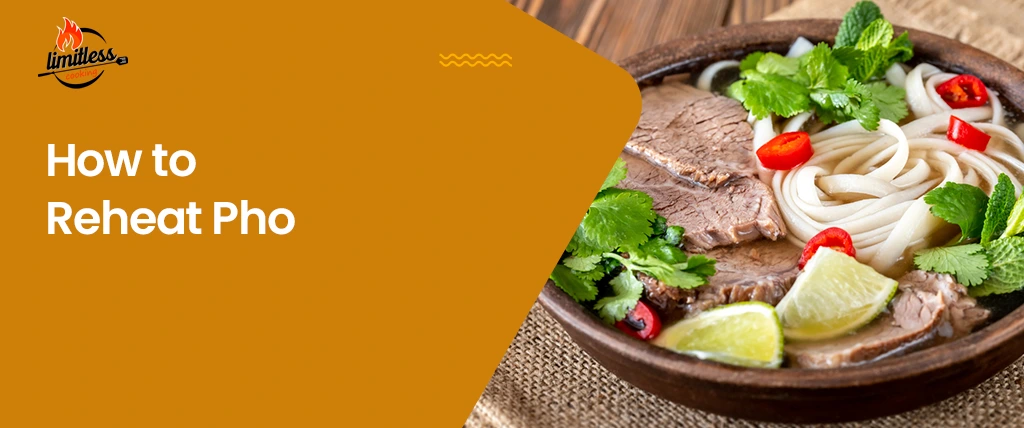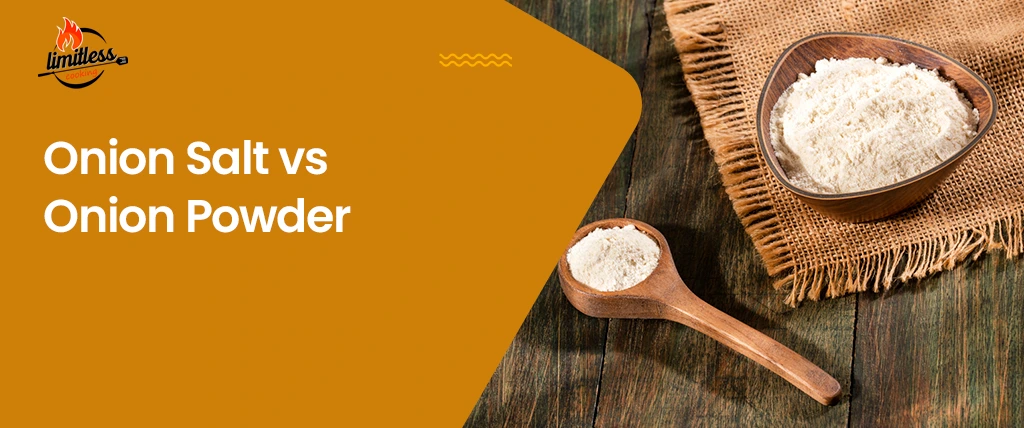How To Reheat Pho – Top 3 Ways To Follow

Got tasty pho from takeout? Want to know how to reheat pho most efficiently?
Why not get into my in-depth reheating methods? Use any of them to get a bowl of smoking hot pho noodles in a cozy place.
A Quick Note On Methods On How To Reheat Pho
I have gone through all the methods one after another. Hence, I listed this one after another. These are the easiest methods you could have in hand.
Below are the methods listed in numerical order:
- Reheating Pho with Microwave (Fast method, might overheat)
- Reheating Pho with Stove Top (Manual heating, takes practice)
- Reheating Pho with Slow Cooker (In-depth cooking, takes time)
As I have gone through each method, I noted some ups and downs.
Writer’s Note: Always process the broth first. Alongside, keep other ingredients ready as well. Doing so will fasten up the reheating process. More so, you will get to enjoy fresh pho noodles faster.
See the video below where it’s demonstrated how to reheat pho.
How To Reheat Pho (All Methods)
Using any of the following reheating pho techniques, you will get the perfect amount of heating without comprising on taste and texture.
Let’s get in.
1. How to Reheat Pho with Microwave
Whether you realize it or not, using a microwave is the best option. More so, you get the best reheating on your photo right away.
Using a microwave will get the best out of the heating process.
Let’s get into it right now.
Instructions:
- Take out the noodles and put them into a bowl.
- Microwave it for at least 1-2 minutes.
- Now, take out all the spices and seasonings and mix them into the heated bowl.
- Microwave it for at least another 30 seconds.
- Take your broth and microwave it for 4 minutes.
- Put the boiling broth solution onto the Pho.
- Mix up the solids, herbs, vegetables, and others.
Pros:
- Faster reheating
- Easy to follow
- Makes
Cons:
- Can Overheat the Pho
Pro Tips: Look for the condition of the pho noodles broth while microwaving it. Ensure it doesn’t get overheated, or it might not taste good.
2. How to Reheat Pho with Stove Top
I always use the stove-top cooking option when I need manual cooking. In the stop top, I get to control the heat and the duration of it.
More so, you get more freedom to add different types of taste twists to the pho.
Instructions:
- Take out the northern and put it onto a saucepan
- Start heating it up and Wait for it to boil.
- Put the boiling broth onto the nodules and other solids.
- Wait for at least 10 minutes and serve it right away.
Pros:
- Simpler method
- Manual heating
- Precise controlling
Cons:
- A bit tricky to master
Pro Tip: Always make sure your brother is boiling hot before adding in the noodles.
3. How to Reheat Pho with Slow Cooker
When you are looking for the perfect cooking inside out, then slow cooking can come in handy. As you have in-depth heating of pho, it tastes better than ever.
You only have to have proper time in hand to use slow cooking. Anyway, the results are great all the time.
Here are the steps to do so:
Instructions:
- Take out the Pho and place it into the slow cooker.
- Set up the heat to mid-level.
- Cook it for at least 1 to 2 hours.
- Stop the cooking once done and serve it.
Pro Tip: You must strike the pho in the mentioned 1 to 2-hour timeframe.
Pros:
- In-depth cooking
- Gives perfect taste
- Consistent heating
Cons:
- Takes time to complete
How to Heat Up Takeout Pho
Many of us order pho from the takeout. More so, the heating process for the take-out photo is a bit different.
As you get all the ingredients and meats in a separate container, you must ensure everything is cooked more finely.
More so, it’s more than important to reheat the pho perfectly. Otherwise, the take-out pho will not taste great at all.
Let’s go through all the instructions you need to go through.
Instructions:
- Take a bowl to have all the pho ingredients.
- Use either a microwave or stove to heat up the broth. Most of all, ensure the birth is boiling in both methods.
- Put your noodles in the mentioned bowl. Then make sure to add other solids on top of it.
- Look if the broth starts boiling or not. Once it starts boiling, take it out and put it onto the noodles.
- Wait a little bit. You should wait for at least 30 seconds for most of them.
- Serve the pho right away.
Pro Tips: Take your time while re-heating up take-out pho. Instead, wait until the broth is up to the boiling point. More so, always wait for the broth to start boiling up.
How to Store Pho
The best way to store leftover pho is to separate all ingredients. But how to store leftover pho rice noodles and meat? Well, you only have to use the airtight container. It’s the best option, as it blocks outside bacteria from entering the food.
First, separate the broth, noodles, and meat from the pho. More so, you could eat away the small bits of vegetables. Hence, once you separate each element, use airtight plastic wrap and place it into the container. Afterward, you could store it in the freezer.
Remember that you can only store pho noodles briefly when all elements are mixed into the broth. The broth should be free of any solid elements. On the other hand, the meat must be placed in an airtight plastic bag.
In addition, You could freeze the broth for long-term storage. Consider putting it into the deep fridge. This way, you can increase the shelf life of the broth. More so, you could do the same with other ingredients of the pho noodles.
You could use a zipper bag for the broth to store more because zipper bags only take up a little space in the fridge. More so, you get great storage without spillage. Hence, make sure to have some space around as it will expand as it stays in the fridge.
How Long Does Pho Last?
Depending upon your storing technique, the answer can vary. For example, pho could last longer when you use a fridge. More so, you need to use proper storing material for better lasting of your leftover pho broth. Let’s take a sharp look at how long pho lasts.
In the fridge – When you are storing the pho in the fridge, it could last for 6-7 days. But make sure the fridge is at a consistent temperature. More so, use proper storing material such as air-tight containers and packets. The broth will last longer than usual.
In Room Temp – Even though I don’t like to put the broth in normal temp, you could store both for 2 days. Hence, you must ensure the broth is free of any smaller vegetable bits. Most of all, the nodules should be out of the broth as well.
Pro Note: Put some ice into the broth to aid the freezing process. In addition, keeping broth in the fridge will stay intact for longer. Hence, it would be great if you eat the noodles much later.
Conclusion
That’s my in-depth take on how to reheat pho. Reheating pho is easy. You can try the mentioned approaches to discover which works best for you.
Most of all, it’s ideal to have adequate time in hand before starting the reheating process. Don’t rush; instead, follow the instructions with care. Every step is easy and simple, so it won’t be a big deal.
FAQs
Below are the questions you should get familiar with.
How should I reheat my pho?
If you are in a hurry, microwaving the pho will be the best option. Because you get to boil up the broth faster and put it onto the noodle. On the other hand, if you want in-depth heating and boiling, a stove and slow cooker would be best.
Is Pho eaten hot or cold?
Pho always gets eaten hot. More so, you need to make sure the broth is boiling. Once the broth reaches the boiling hot level, you can only mix the noodles in. Don’t go for cold pho, instead, reheat it up and eat it deliciously.
Are pho noodles healthy?
Pho noodles are super healthy and offer you a lot of nutritional value. To be specific, it certainly helps the joints of your body. More so, many people use it to maintain a well-balanced diet as well. A bowl of pho noodles has nutrients such as sodium, calories, and others.






